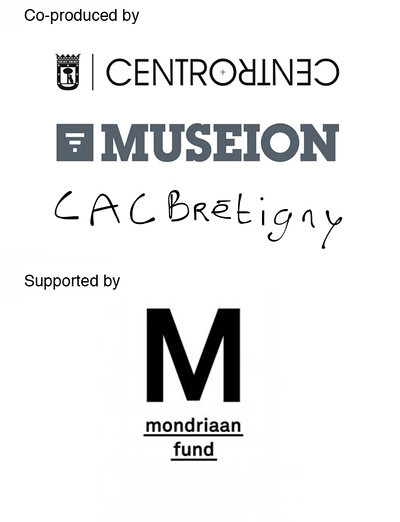Bestiario de Lengüitas (Bestiary of Tonguelets)
October 4, 2019–January 19, 2020
Plaza de Cibeles, 1
28014 Madrid
Spain
Hours: Tuesday–Sunday 10am–8pm
T +34 914 80 00 08
info@centrocentro.org
CentroCentro (Madrid, Spain) hosts Argentinean artist Mercedes Azpilicueta’s first large-scale solo exhibition in Europe: Bestiario de Lengüitas (Bestiary of Tonguelets).
Curated by Virginie Bobin (France), the exhibition is the result of a research project that began in 2017 in Paris, during a residency at Villa Vassilieff - Pernod Ricard Fellowship, in which Azpilicueta combines visual and theatrical strategies to question the ways that we inhabit this world.
The project is produced by CentroCentro in collaboration with Museion – Museum of Modern and Contemporary Art, Bolzano/Bozen (Italy), and CAC Brétigny (France), and will travel to both institutions in 2020. The exhibition is organised in collaboration with Mondriaan Fonds.
Bestiario de Lengüitas invites visitors to enjoy a theatrical experience that unfolds through the senses and movement, following the thread of a script for a future performance written by the artist herself. Fueled by workshops, collaborations and rehearsals with artists, researchers, designers, dancers and singers, the works on view invite a choir of grotesque characters to loudly inhabit the stage of that future performance. Using obsolete knowledge systems, “neobarroso” poems, failed translations and ambiguous ingredients, they try to maintain chaos and excess in a world calling for order, efficiency and transparency; revealing an essential feature, humour, a quality that animates most of Mercedes Azpilicueta’s works.
Its key protagonists include: a Mala-mama, a Sister living in limbo, a Teacher from the future, Fallen angels and a Choir of corpses, all characters from Azpilicueta’s script; several figures from art history and literature, such as the medieval Lady with the Unicorn, the artist Lea Lublin and the poet Néstor Perlongher, who inspired her writings and drawings; and a selection of plants with both healing and toxic powers, which traveled across the Atlantic to open contamination channels between the Old World and the New. They all play a game of hide-and-seek across films, drawings, sculptures, tapestries and soundtracks, which are conceived as scores, rehearsals, décors, encoded knowledge systems and even characters, rather than as autonomous artworks. In Bestiario de Lengüitas, roles are constantly changing.
Many of the pieces have been made using “poor” craft-based or handmade techniques that are often associated with the domestic work of women and with subaltern knowledge, such as sewing, embroidering or dying. The materials are either recycled or natural (latex, leather, silk, wax) and add another layer of stories to the objects, that of the circulation of resources and knowledge often acquired through the violent exploitation of humans and nature.
The main collaborators to the project include: Lucile Sauzet (costumes), Ana Ausín (furniture) and Vanina Scolavino (graphic design), as well as Laura Fernández Antolín (production assistance), Federico García Monfort (sound), Hélène Harder (film), Julien Jassaud (programming and robotics), Emmanuelle Lafon (performance), Quiela Nuc (film), Ana Roquero (research), Pauline Simon (performance), Javier Villa (research and performance), Tiago Worm Tirone (sound), students from the Masters Projets Culturels et Artistiques and Scènes du Monde (Université Paris 8) and the Máster en Práctica Escénica y Cultura Visual (Universidad de Castilla-La Mancha y Museo Reina Sofía); and participants in different choral schools in Madrid.



